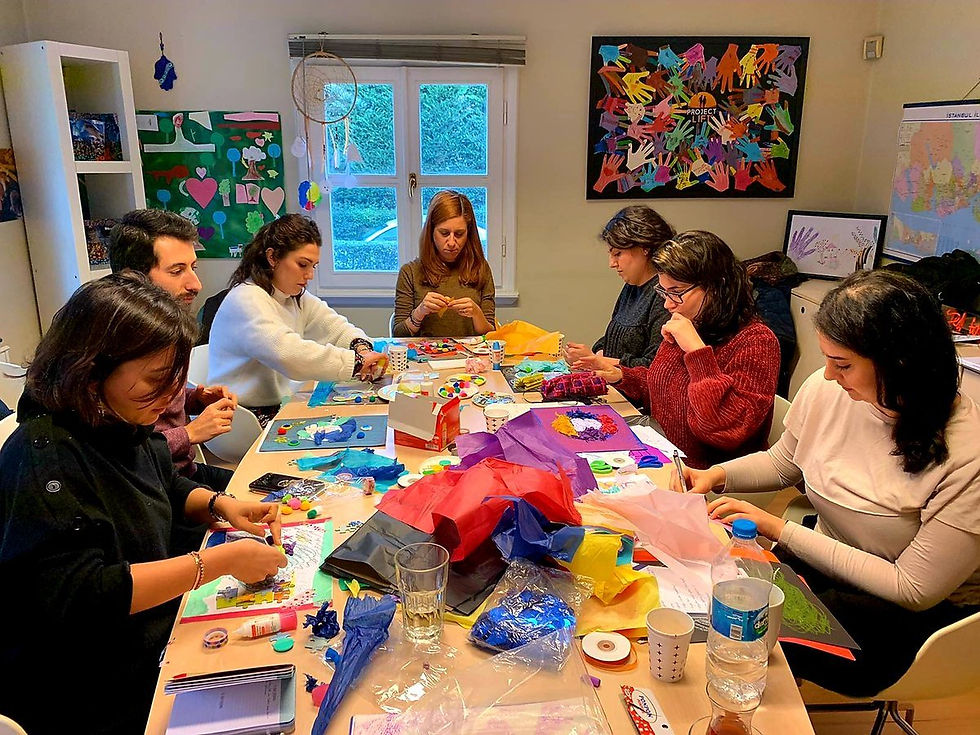
Art therapy is one of the most mysterious and attractive areas of practical psychology and psychotherapy. Art therapy methods are very diverse and can be used as an independent approach.
Who is an art therapist?
The most important professional tool of an art therapist is his personality.
Who can become an art therapist:
1. A psychologist can complete an additional education in the field of art therapy, and then apply the principles of art therapy in their daily work or practice in an art therapy format.
2. Medical professionals, usually psychiatrists, also sometimes take art therapy courses to help people who seek their help most effectively. Their approach largely depends on the initial education and field of practice of the art therapist, each of them has its own attractive sides, and this should be considered when choosing a specialist.
In creative work, internal conflicts, traumatic experiences, unconscious emotions are inevitably reflected - everything that in ordinary "verbal" therapy becomes a hidden mechanism for protecting the psyche.
The presence of a psychotherapist or members of a therapeutic group and his unconditional acceptance of a person into the work has a transformative effect on an interpersonal level. In addition, the creative work carried out can become the subject of discussion, and then the impact is carried out through a deeper understanding and acceptance by the person himself.
Psychoanalytically oriented art therapists use creativity as a material for analysis, interpretation of symbols, and the birth of associations. This is the use of art therapy as a way to the unconscious person, which helps him to establish contact with himself.
Art therapy methods are very popular, which help to understand and sometimes change the deep “history” or “myth” that accompanies a person’s life path.
Who needs art therapy first?
Due to the fact that art therapy has a multi-level therapeutic potential, it is suitable for a very wide range of people.
Art therapy is also beneficial for older people suffering from mental depression (including senile dementia), for people with severe physical illnesses, for children with disabilities, and disorders such as:
📍autism;
📍hyperactivity;
📍delayed mental and speech development.
Art therapy for healthy children who need the help of a psychologist due to a depressed emotional state, fears and other local problems, acts as a diagnostic and corrective tool that does not require a high speech activity of the child.
Among clinically healthy people, there are also many who are suitable for art therapy, as it provides an opportunity to develop in a personal and creative sense, helps to cope with stress, eliminates neuroses and phobias, and helps to build relationships with a family or a child.
What is art therapy?
Individual art therapy.
This is a variant of individual psychological counseling, in which a person is engaged in creative work in the presence of an art therapist. This may be a drawing on a given topic or in a certain technique, the consistent creation of an artistic image with an accompanying plot (fairy tale) or free spontaneous improvisation. Usually, an art therapy session lasts a little longer than a regular consultation, and during this time the person has time to immerse himself in the state of creative flow, create an artistic image, and then study it with the help of Therapist.
Group art therapy.
In essence, this is a psychotherapeutic group that can be organized in two different formats.
📍closed format with a permanent list of participants;
📍open format, with the possibility of accepting new participants.
Duration of art therapy courses:
1. Short-term, from several weeks to several months.
2. Long-term, from one to several years.
Usually the group has a moderator - a specialist who, to a certain extent, manages the work of the art group. And perhaps more direct participation, such as interpreting elements of the work, taking initiatives in discussions, analyzing group dynamics, suggesting topics or materials for creativity, and so on.
Group art therapy is carried out in randomly formed groups or in groups formed in accordance with a certain criterion:
📍age;
📍floor;
📍profession;
📍diagnostics.
Children's art therapy.
It can be implemented both individually and in a group form. Children's art therapy is characterized by a wealth of various forms of creativity. Sand therapy, spontaneous movement, dance movement therapy, play therapy and fairy tale therapy are often used with children.
Family art therapy.
Usually family art therapy is aimed at improving the quality of communication between family members. Her methods include a variety of co-creation techniques to help understand family relationships, improve mutual understanding, and learn to share feelings and thoughts with each other.
Open art therapy studio.
As a rule, such open-air studios work in psychiatric clinics, psychological help centers or institutions for children with special needs. The studio always has one or more specialists ready to devote time and attention to each person if the need arises.

Σχόλια